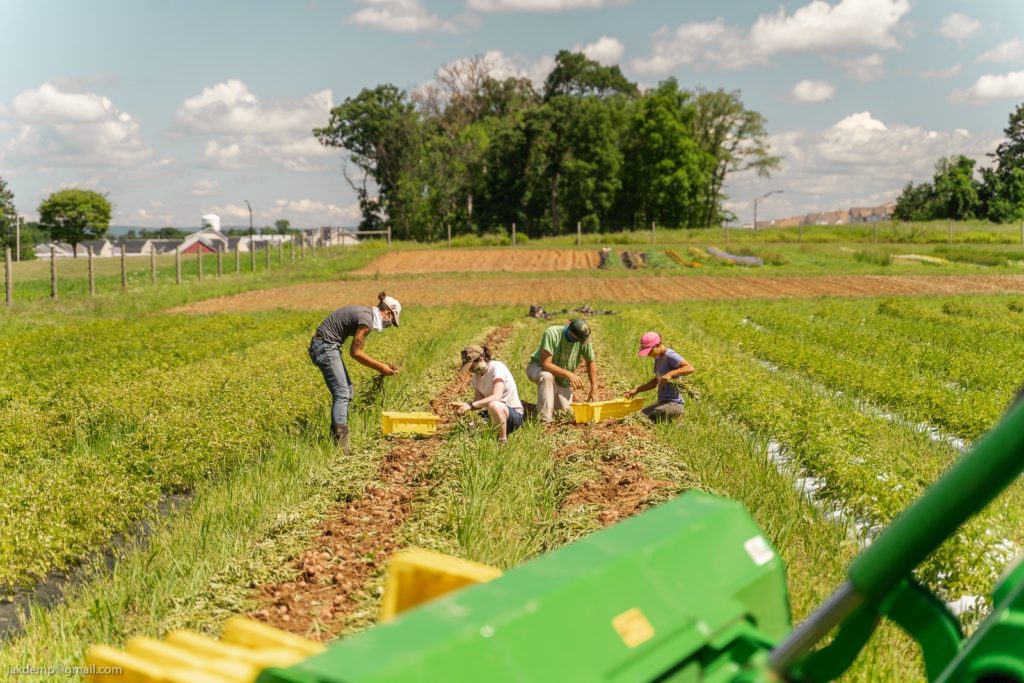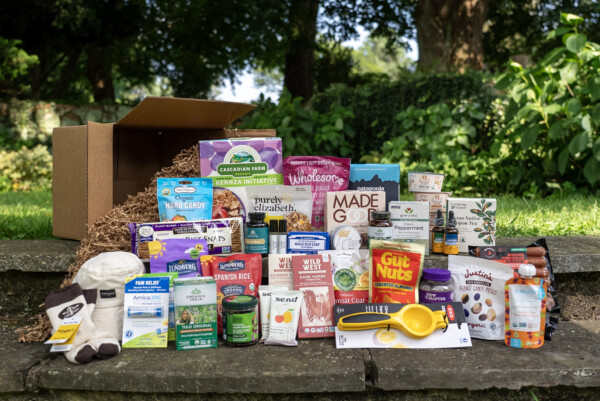President Joe Biden has introduced an ambitious climate plan for the United States. Could regenerative agriculture help us get there?
President Biden has pledged to spend up to $2 trillion on climate change initiatives. “Climate change” is a broad-brush topic, so how will these measures impact food, agriculture and regenerative organic farming? Let’s take a closer look at “The Biden-Harris Plan to Build Back Better in Rural America” and examine how a few key proposals could impact the food system.
Agriculture & The Climate Crisis:
First… what does agriculture have to do with climate change? Agricultural activities are responsible for nearly a quarter (24%) of global greenhouse gas emissions. But building healthy soil by implementing regenerative practices like cover cropping and reduced tillage can help sequester carbon and mitigate the damage to our climate. Reducing reliance on fossil-fuel-intensive synthetic chemicals, grazing animals on pasture, and other organic practices can play a major role.
Biden’s Plan
While President Biden hasn’t directly stated the role that regenerative organic agriculture will play in his administration, these farming practices (and their outcomes!) are uniquely suited to its climate goals. Most notably, the Biden administration has proposed a carbon market to incentivize carbon capture. For farmers, this could mean receiving payments for the carbon they sequester in their soils. Many scientists, agribusinesses and lawmakers agree that healthy soils will be vital to curbing the climate crisis.

Let’s dive deeper and examine some key proposals from the “The Biden-Harris Plan to Build Back Better in Rural America:”
Key Proposal 1:
Help farmers leverage new technologies, techniques, and equipment to increase productivity and profit while tackling the challenge of sequestering carbon and reducing emissions – making American agriculture the first in the world to achieve net-zero emissions and create new sources of income for farmers in the process.
- In Their Words: “President Biden will make a significant investment in research to refine practices to build soil carbon while maximizing farm and ranch productivity. Soil is the next frontier for storing carbon.”
- What This Means For Regenerative Ag: Regenerative agriculture has the potential to drawdown greenhouse gas emissions and sequester them in the soil due to its emphasis on soil microbiome, reduced tilling, livestock integration, and more. We may soon see the introduction of carbon markets and new technologies that encourage and incentivize regenerative organic farming practices, including a stronger emphasis on the importance of healthy soils.
*Learn more: Bills like the Agriculture Resilience Act (H.R. 5861) introduced by Rep. Chellie Pingree identify agriculture as a major tool in the fight against climate change. H.R. 5861 aims to increase agricultural research, improve soil health, support pasture-based livestock, and reduce food waste.
Key Proposal 2:
Help family farms and other small and medium-sized farms thrive, foster the development of regional food systems, and advance Community Supported Agriculture (CSA).
- In Their Words: “As President, Biden will partner with small and mid-sized farmers to help them collectively create supply chains to deliver fresh produce and other products to schools, hospitals, and other major state and federal institutions. Biden will make sure farmers and producers have access to fair markets where they can compete and get fair prices for their products. He will also support and advance local production for farmers’ markets.”
- What This Means For Regenerative Ag: Our research has shown that organic farming is 3-6x more profitable than conventional—holding a power to revitalize communities and empower farmers. Incentivizing regenerative and organic agriculture would go far in creating a thriving food system, while increasing the production of healthy foods like fruits, vegetables and nuts grown throughout the United States. We may also see tightened antitrust enforcements across the agriculture sector, creating a more equitable farming future while bolstering local food systems.
*Learn more: In 2014, Rodale Institute established an organic farm on the Anderson Campus of the St. Luke’s University Health Network to offer organic produce to patients and staff. On 11.5 acres, our farmers grow thousands of pounds of high-quality, organic produce for distribution to all ten St. Luke’s campuses in the region.
Key Proposal 3:
Expanding protections for farm workers – disproportionately Latinx and immigrant workers – who have always been essential to working our farms and feeding our country.
- In Their Words: “President Biden will ensure farm workers are treated with the dignity and respect they deserve. He will work with Congress to provide legal status based on prior agricultural work history, ensure they can earn paid sick time, and require that labor and safety rules, including overtime, humane living conditions, and protection from pesticide and heat exposure, are strictly enforced.”
- What This Means For Regenerative Ag: The Covid-19 pandemic has exposed the frailties of our food systems in more ways than one, reinforcing the need for the safety and protection of our farmers and ranchers. Organic is a surefire way to avoid exposure to the most dangerous chemicals on the market. Rodale Institute supports the Regenerative Organic Certification which takes organic a step further by ensuring fair payments and living wages for farmers and farm workers, safe working conditions, capacity building and freedom of association.
*Learn more: In 2019, Vice President Kamala Harris introduced the Fairness for Farm Workers Act, which would mandate overtime for farm workers and end a handful of additional minimum-wage and overtime exemptions. President Joe Biden endorsed the policy during his campaign.
Key Proposal 4:
Re-invest in land grant universities’ agricultural research.
- In Their Words: “President Biden will bolster funding for the Sustainable Agriculture Research and Education Program and the National Institute of Food and Agriculture. Our farmers need new technologies to compete in world markets while protecting our soil and water.”
- What This Means For Regenerative Ag: The Farm Bill is not up for renewal just yet, but we may see the USDA reevaluate the distribution of funds and farm subsidies down the road. Consistent, regionalized research is crucial to ensuring a healthy food system that can be sustained for decades—that’s why Rodale Institute has invested in Regional Resource Centers in three of America’s agricultural hotspots.
How Can I Make an Impact?
Trying to repair our agricultural system can feel like a daunting and nearly impossible task, but there are small ways to make a big difference. By reaching out to your local government representatives, supporting smaller institutions, putting pressure on brands, buying regenerative, and voicing your opinion on tangible solutions such as regenerative agriculture, you have the power to make immediate impact!
*Take Action: Feel free to copy-and-paste from our Letter To Your Policymaker Template to support regenerative agriculture. Use Rodale Institute’s social media toolkit to tag your favorite brands and ask what they’re doing to implement regenerative practices in their supply chain. Include the hashtag #SoilCarbon Solution!
Positive, lasting change requires a systems-thinking approach with equitable solutions. The implementation of climate-smart agricultural practices under the new Presidential administration offer promise for changing our food system for the better.

